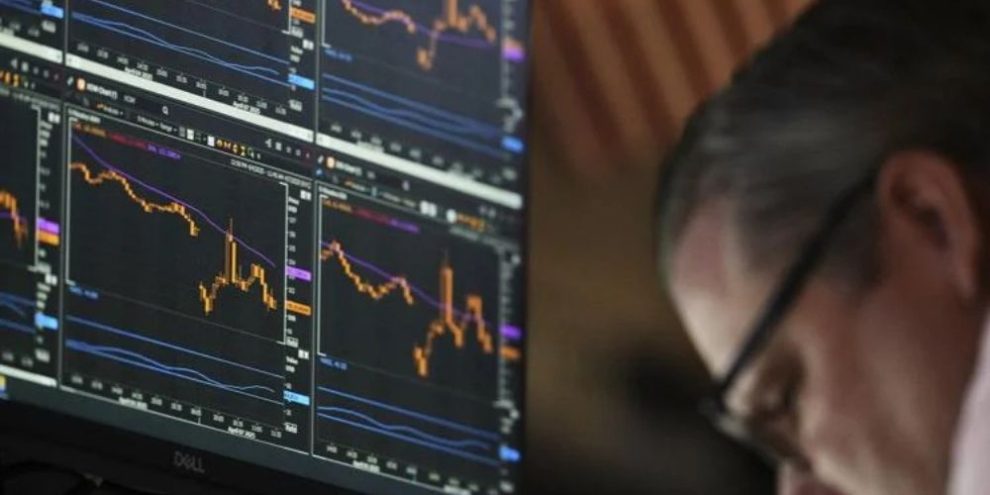
Updated April 8, 2025 @ 10:53am
Some relief is flowing through financial markets worldwide Tuesday, and stocks are bouncing to recover a bit of their historic losses since President Donald Trump dramatically raised the stakes in his trade war last week.
The S&P 500 was up 3.7% in morning trading, though it still remains more than 14% below its record set in February. The Dow Jones Industrial Average was up 1,388 points, or 3.6%, as of 10:30 a.m. Eastern time, and the Nasdaq composite was 4.1% higher.
The bounce was global. Stock indexes rallied 6% in Tokyo, 3.5% in Paris and 1.6% in Shanghai. The price of crude oil also pulled higher after touching its lowest level since 2021 on Monday. Bitcoin steadied and was back above $79,000 after dropping toward $76,000 the prior day.
Even with Tuesday's big jump, which could be the best for the S&P 500 since late 2022, analysts say more swings up and down are likely for markets not only in the days ahead but also perhaps the hours.
The big question remains centered on how long Trump will keep his stiff tariffs on other countries, which would raise prices for U.S. shoppers and slow the economy. If they last a long time, economists and investors expect it to cause a recession. But if Trump lowers them through negotiations relatively quickly, the worst-case scenario can be avoided.
Hope still remains on Wall Street that negotiations may be possible, and Trump said Monday that a conversation with South Korea's acting president helped them reach the “confines and probability of a great DEAL for both countries."
“Their top TEAM is on a plane heading to the U.S., and things are looking good,” Trump said on social media. “We are likewise dealing with many other countries, all of whom want to make a deal with the United States.”
Japanese stocks led global markets after the country’s prime minister, Shigeru Ishiba, appointed his trade negotiator for talks with the United States. It was based on an agreement between Ishiba and Trump, Japanese officials said.
Barrie's News Delivered To Your Inbox
By submitting this form, you are consenting to receive marketing emails from: Central Ontario Broadcasting, 431 Huronia Rd, Barrie, Ontario, CA, https://www.cobroadcasting.com. You can revoke your consent to receive emails at any time by using the SafeUnsubscribe® link, found at the bottom of every email. Emails are serviced by Constant Contact
It “seems like we were very oversold and there’s hope that things may de-escalate from here,” said Sameer Samana, a senior global market strategist for Wells Fargo Investment Institute, He, though, also suggested staying cautious “as the key countries continue to escalate, rather than de-escalate.”
China said it will “fight to the end” and warned of countermeasures after Trump threatened on Monday to raise his tariffs even further on the world’s second-largest economy.
Such a bounce back for global markets as Tuesday's perhaps shouldn’t be a surprise. Stocks don’t go in one direction forever, and some of the best days in the market’s history have been clustered around some of its worst days.
The biggest gain for the S&P 500 since World War II was an 11.6% surge on Oct. 13, 2008, for example. That was during the depths of the Great Recession, when worries were high that the financial system was collapsing and the S&P 500 was in the midst of a nearly 57% plunge from its peak in late 2007 until its bottom in March 2009. A couple weeks later, the index had another one of its best days in history, soaring 10.8%.
That’s one of the reasons many financial advisers suggest not trying to time the market and selling stocks and other investments meant for the long term when nervous, because of the risk of missing out on such huge up days.
Trump’s trade war is an attack on the globalization that’s shaped the global economy and helped bring down prices but also caused manufacturing jobs to leave for other countries. He has said he wants to bring factory jobs back to the United States, a process that could take years. Trump also says he wants to narrow trade deficits with other countries.
On Wall Street, health insurers helped lead the market after the Centers for Medicare & Medicaid Services announced a stronger-than-expected increase in Medicare Advantage payments for next year. Humana jumped 11.8%, United Health climbed 8.3% and Elevance rose 4.8%.
In the bond market, Treasury yields rallied for a second straight day to recover more of their sharp losses from prior months. The yield on the 10-year Treasury rose to 4.23% from 4.15% late Monday and from just 4.01% late Friday.
Yields tend to rise with expectations for the U.S. economy’s strength and for inflation. ___ AP Business Writers Matt Ott and Elaine Kurtenbach contributed.





